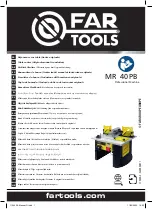
32
Using the Console Interface
Each of the fields on this menu takes effect the next time the system is
restarted. Fields that can be set include:
♦
IP Address: determines the IP address used by the switch for
receiving SNMP and
Telnet
communications. Should be of the
form xxx.xxx.xxx.xxx, where each xxx is a number (represented in
decimal) between 0 and 255. This address should be a unique address
on a network assigned to you by the central Internet authorities. The
same IP address is shared by both the SLIP and Ethernet network
interfaces.
♦
Subnet Mask: bitmask that determines the extent of the subnet that
the switch is on. Should be of the form xxx.xxx.xxx.xxx, where each
xxx is a number (represented in decimal) between 0 and 255. If no
subnetting is being done, the value should be 255.0.0.0 for a Class A
network, 255.255.0.0 for a Class B network, and 255.255.255.0 for a
Class C network.
♦
Default Gateway: IP address that determines where frames with a
destination outside the current subnet should be sent. This is usually
the address of a router or a host acting as an IP gateway. If your
network is not part of an internetwork, or you do not want the switch
to be accessible outside your local network, you can leave this field
blank.
♦
Send BOOTP Request Upon Power Up: determines whether the
switch should send out a BOOTP broadcast request when it is
powered up. The BOOTP protocol allows IP addresses, network
masks, and default gateways to be assigned on a central BOOTP
server; if this option is set the switch will first look for a BOOTP
server to provide it with this information before using the supplied
settings.
















































